I am trying to detect an IR signal with a photodiode to connect it to my STM32F411 and use it as a trigger signal. The signal I send are two pulses at 500 kHz which looks like this:
I am using a transimpedance amplifier and a bandpass filter to get rid of parasitic signals of the photodiode.
I can detect a rising edge on the receiver side, but it is not fast enough. How can I improve the curcuit to have the same signal I send? That means two pulses with a frequency of 500 kHz.
The measurement was right after the amplifier on V1. So this signal I receive will not pass my bandpass filter. It looks like my circuit is way too slow to reproduce the two amplitudes from the sender.
After receiving answers explaining why the TL074 is a poor choice:
I replaced the TL074CN with an MCP6292 which has the right DC specification. Furthermore I connected the photodiode to ground instead of connecting it directly to VDD.
The rising edge looks pretty good, but now the falling edge isn't fast enough.
Getting closer but not good enough to detect it with my microcontroller.
As recommendet i lowered the Transistor to 10k and removed the capacitor. Now i have a new behaviour, it depends on the distance from my IR sender to the photodiode. If the sender is 10cm away fron the photodiode, the graph looks like this:
If the sender moves away from the diode, the two pulses appear.
After 1m the green signal dissapears. How can i increase the range, by using a better photodiode or a different amplification? And how i get rid of the overload/overamplification?

